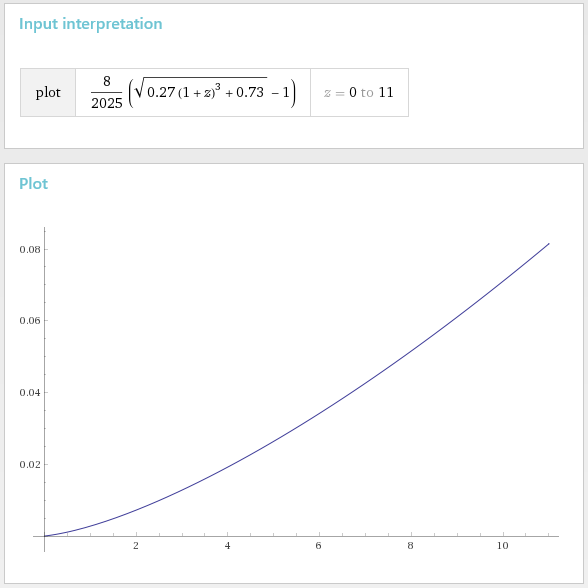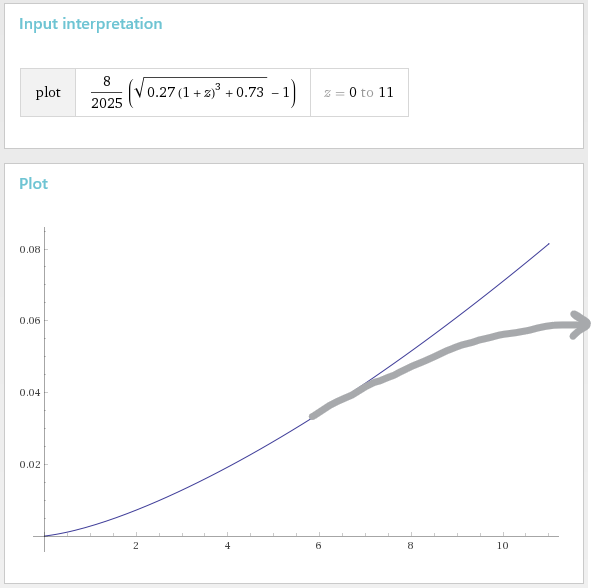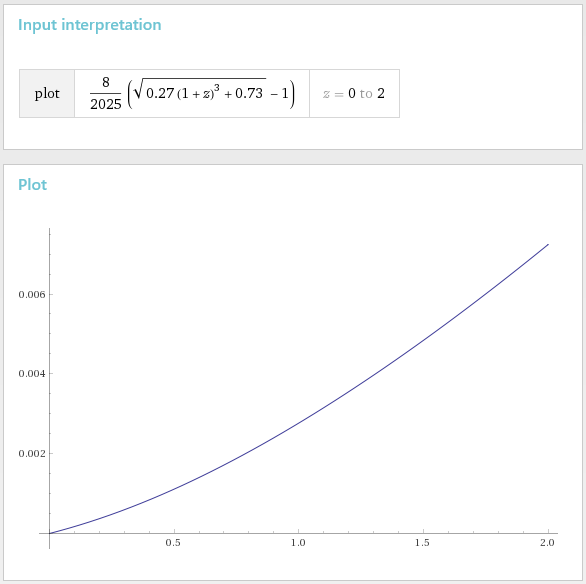

TEFLing
Members-
Posts
11 -
Joined
-
Last visited
Content Type
Profiles
Forums
Events
Everything posted by TEFLing
-
Please read ISM & IGM by Ryden & Pogge, I'm sure their accessible style will clarify these concepts for you Again, that's completely backwards The IGM is fully ionized = all electrons free from both H,He from z=0 to z=6-11 Remember your cosmic history Big Bang (fully ionized) expansion & cooling Recombination (neutralization at z~1100) dark ages (fully neutral) Reionization (z~11) fully ionized IGM present epoch (z=0) A basic lowest order linearization scheme reveals that accounting for Thomson opacity in the "benchmark cosmology" (0.27,0.73) results in slight adjustments to: Omega (Dark-)Matter / Omega Lambda / Omega Radiation -- very slight effects, reducing radiation in favor of matter would be consistent with neutrinos have rest-masses m>1e-4 eV and so not being relativistic at T~2-3K (they would drop out of the radiation term & be reinserted into the (Dark-)Matter term) +0.0044 +0.0001 -0.0005
-
That's what I've tried to say several times now Thomson opacity is not a substitute for "dark energy", just a (slight) correction to the best-fit benchmark cosmology parameters and, no, you cannot extend Thomson opacity beyond the beginning of reionization 6<z<11 Prior to that epoch, there were no free electrons and no Thomson opacity CMB polarization measurements have placed an upper bound on the maximum Thomson opacity at 0.06 or so, perfectly consistent with these calculations: Given that the neutral fraction becomes increasingly appreciable beyond z>6, one might expect that actual optical depth to increase more or less like follows, again completely consistent with maximums from measured CMB polarization:
-
that would seem to be a reasonable assumption but it's not true in this case researchers have considered "gray dust" as an alternative to "dark energy", but no one has considered "gray plasma" as a (slight) addition If they had, I would just be reading what they wrote, yes? If there is an obscure article out there behind a pay wall, then please LMK Otherwise, "gray plasma" could have as much as a <1% effect on the choice of optimal parameters (M,L 0.27,0.73) --> (0.28,0.72) say On the evidence available to me, once researchers realized that "gray scatterers" could not explain away "dark energy" altogether... they stopped considering them entirely... but they still have a non-trivial if lower-order effect CMB folks consider it -- so why not SNe Ia folks as well?
-
There are researchers attempting to duplicate the successes of SNe Ia with QSOs, extending the distance ladder up to z~6 SN Ia themselves currently extend only to z~2, so that the IGM is virtually fully ionized, and essentially primordial in composition (X=3/4), and SNIa distance moduli involve a K-correction, indicating reliance on visible / IR wavelengths, such that Thomson opacity is valid All distance ladder estimates can be improved with improved models, researchers have tried "gray dust" but for some reason have shied away from the "gray plasma" the CMB crew has already accounted for Equation (6) can also be generalized for non-flat cosmologies with the Curvature term, that extra degree of freedom enables matching a modified cosmology with opacity to the benchmark cosmology without Thomson, I found (M=0.27,L=0.73) --> (M=.3, L=.76) maintaining the benchmark cosmology (B=0.036) for the IGM (total baryons without stars)
-
Reionization was complete by z~6, evidenced by the disappearance of Gunn-Peterson Troughs in quasar spectra below that The IGM has been virtually 100.0000% ionized ever since (neutral fraction of order PPM at most) Yes, reionization was significant by z~11, and equation (6) is the appropriate one to use (with the presumed "Benchmark Cosmology") to compute the integrated optical depth
-
Am I allowed to mention that I made a numerical model of this "gray plasma"? In very round numbers, the optical depth is about 1% per Z, say 2% at red shift 2. So you need to choose new cosmological parameters. Which. Bring supernovae closer to Earth for the same red shift. So that while they would appear brighter. If the Cosmos was completely empty. When you add the Thomson Opacity back in it reduces the observed brightnesses back down to observations. I find that that it is actually possible to choose slightly modified cosmological parameters, slightly more total matter for example which has the effect of reducing distances to supernovae, which then still match actual observations at every red shift, with the opacity turned on
-
Can I ask, if anyone has considered, the Thomson opacity of the IGM, between earth and distant SNe Ia ? Yes, the CMB limits the opacity to a few percent at most, but even that would have non-trivial impact on calculated distances (and, so, indirectly, on the best-fit cosmological parameters, as compared to the "completely clear skies" benchmark Cosmology) ?



